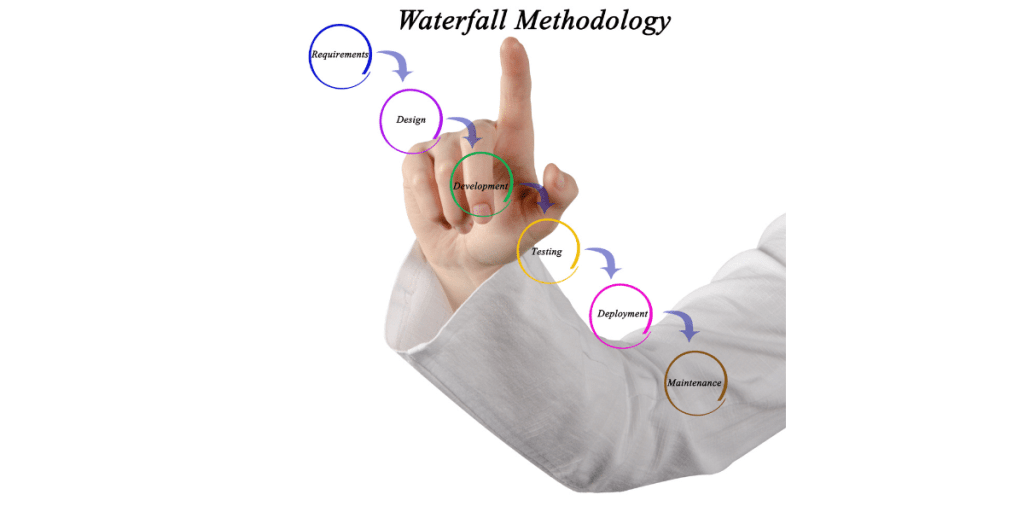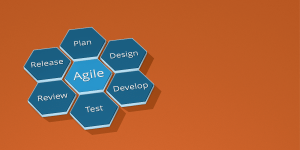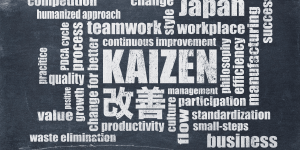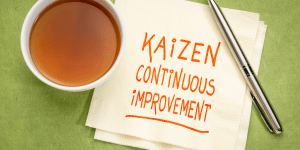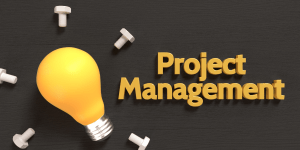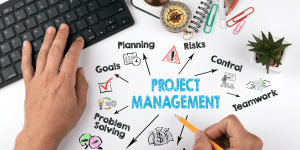Waterfall Management Methodology is a project management approach that follows a linear, sequential process. It is widely used by organizations to manage complex projects that have well-defined requirements and clear deliverables. Waterfall Management Methodology is a structured approach that focuses on planning, executing and controlling the project from start to finish.
In this blog post, we will discuss the definition and principles of Waterfall Methodology, the benefits of using Waterfall in team management, the tools and tips for implementing Waterfall, the pros and cons of Waterfall, and examples of companies that use Waterfall Management Methodology. By the end of this post, you will have a better understanding of Waterfall Management Methodology and how it can help you manage your projects more effectively.
- The Waterfall Methodology: A Sequential Approach to Project Management
- Definition and principles of Waterfall Methodology
- Benefits of Waterfall in Team Management
- Tools & Tips for Implementing Waterfall Management Methodology
- Pros and Cons of Waterfall Methodology
- Examples of Companies That Use Waterfall Management Methodology
- Conclusion
The Waterfall Methodology: A Sequential Approach to Project Management
The Waterfall methodology is a popular approach to project management that follows a sequential, linear process. This methodology is best suited for projects with clear, well-defined goals and deliverables, and where there is little need for flexibility or adaptability. Like a waterfall, the process begins at the top and flows downwards through various stages, each of which must be completed before moving on to the next.
This approach ensures that each stage is thoroughly completed before moving on to the next, reducing the likelihood of errors or missed steps. The Waterfall methodology is often compared to a factory assembly line, where each step in the process is carefully planned and executed to ensure the final product meets the necessary quality standards. This approach is particularly useful for software development projects, where the end product is often complex and requires multiple stages of testing and refinement.
While the Waterfall methodology has its benefits, it is not without its drawbacks. The sequential nature of the process makes it difficult to make changes once a stage is complete, and can lead to delays or additional costs if changes are required later on. In summary, the Waterfall methodology is a useful approach to project management for projects with clear goals and deliverables, and where there is little need for flexibility or adaptability.
Its sequential, linear process ensures that each stage is thoroughly completed before moving on to the next, reducing the likelihood of errors or missed steps. However, its lack of flexibility can make it difficult to make changes later on in the process.
Definition and principles of Waterfall Methodology
Waterfall methodology is a project management approach that follows a sequential process. The idea behind the Waterfall method is that each stage of a project must be completed before moving on to the next one. This means that the project progresses in a linear fashion, much like water falling down a waterfall. The Waterfall methodology has five main phases: requirements gathering, design, implementation, testing, and maintenance.
Each phase has its own set of objectives and deliverables, and each phase must be completed before moving on to the next. One of the key principles of the Waterfall methodology is that it is highly structured and pre-planned. This means that the project team must have a clear understanding of the project scope, timeline, and budget before starting the project.
This helps to ensure that the project is completed on time and within budget. Another principle of the Waterfall methodology is that it is highly focused on documentation. Each phase of the project must be documented thoroughly, including requirements, design, implementation, testing, and maintenance. This documentation helps to ensure that everyone on the project team has a clear understanding of what has been done and what still needs to be done.
In summary, the Waterfall methodology is a highly structured, sequential project management approach that emphasizes documentation and pre-planning. By following these principles, project teams can ensure that projects are completed on time, within budget, and to the satisfaction of all stakeholders.
Benefits of Waterfall in Team Management
The Waterfall methodology is a popular project management framework that is based on a linear, sequential approach. This methodology is widely used in software development and other industries. Here are some benefits of Waterfall in team management: Predictability: One of the main advantages of the Waterfall methodology is its predictability.
The entire project is planned upfront, and each phase of the project is completed before moving on to the next. This approach allows for a clear understanding of the project timeline, budget, and resources required. Documentation: Another benefit of Waterfall is the emphasis on documentation. Each phase of the project requires thorough documentation, making it easier to track progress and ensure that all requirements are met.
This documentation can also be used as a reference for future projects. Clear Roles and Responsibilities: The Waterfall methodology clearly defines roles and responsibilities for each team member. This helps to prevent confusion and ensures that everyone knows what they are responsible for. Quality Control: The Waterfall methodology includes a strict quality control process. Each phase of the project has specific quality assurance activities that must be completed before moving on to the next phase.
This ensures that the final product meets the required quality standards. Less Room for Error: Because the Waterfall methodology is a linear, sequential approach, there is less room for error. Each phase must be completed before moving on to the next, which helps to prevent mistakes and catch issues early on in the project.
In summary, the Waterfall methodology provides predictability, clear documentation, well-defined roles and responsibilities, strict quality control, and less room for error. While it may not be suitable for all projects, it can be an effective team management tool when used correctly.
Tools & Tips for Implementing Waterfall Management Methodology
Waterfall management methodology is a structured and sequential approach to project management. It involves completing each phase of the project before starting the next one. This approach is best suited for projects with a defined scope, schedule, and budget. Here are some tools and tips to help you implement this methodology successfully:
1. Project Management Software
Using project management software can help you manage your projects more effectively. There are many software options available that offer features such as task management, time tracking, collaboration tools, and reporting. Some popular project management tools include Trello, Asana, and Basecamp.
2. Gantt Charts
Gantt charts are a visual representation of a project schedule. They show the start and end dates of each task and the dependencies between them. Gantt charts can help you identify potential delays and ensure that tasks are completed on time. Many project management software options offer Gantt charts as a feature.
3. Document Templates
Creating document templates can save you time and ensure that your project documents are consistent. Some common templates include project charters, project plans, and status reports. You can find many free templates online or create your own based on your organization’s needs.
4. Communication Plan
Having a communication plan in place can help ensure that all stakeholders are informed about the project’s progress. The plan should outline who needs to be informed, what information needs to be shared, and how often communication should occur. This can be done using email updates, status reports, or project management software.
5. Risk Management Plan
Identifying and managing risks is an important part of project management. A risk management plan can help you identify potential risks, assess their impact, and develop a plan to mitigate them. This should be done early in the project lifecycle and should be revisited periodically throughout the project. In conclusion, implementing waterfall management methodology requires a structured approach and the use of tools and techniques to ensure project success. By using project management software, Gantt charts, document templates, communication plans, and risk management plans, you can effectively plan, execute, and monitor your project.
Pros and Cons of Waterfall Methodology
Waterfall methodology is a traditional project management approach that is widely used in software development, construction, and other industries. This methodology follows a linear, step-by-step approach that includes sequential phases such as planning, design, implementation, testing, and deployment. Despite its popularity, the waterfall methodology has its fair share of strengths and weaknesses that project managers should consider before choosing this approach.
Pros:
- Clear and Defined Process: One of the significant advantages of waterfall methodology is that it provides a clear structure and roadmap for the project. This approach is ideal for projects with well-defined requirements, minimal changes, and a predictable outcome.
- Easy to Manage: Since the waterfall methodology follows a linear approach, it is easy to manage and track the progress of the project. Project managers can quickly identify the potential risks and issues and take corrective action to avoid delays.
- Client Satisfaction: Waterfall methodology is an ideal approach for clients who prefer a fixed scope, budget, and timeline. It allows the client to have a clear understanding of the project’s progress and helps to build trust and transparency in the project team.
- Documentation: The waterfall methodology requires detailed documentation at each phase, which helps to create a clear understanding of the project’s objectives, deliverables, and timelines. This documentation can also be used as a reference for future projects.
Cons:
- Rigid and Inflexible: The waterfall methodology is a rigid and inflexible approach that can be challenging to adapt to the project’s changing requirements. Any changes made to the scope, timeline, or budget can significantly impact the project’s progress and lead to delays.
- Time-Consuming: The waterfall methodology is a time-consuming approach that requires extensive planning, documentation, and testing at each phase. This approach may not be suitable for projects with short timelines or those that require quick iterations.
- Difficult to Test: In the waterfall methodology, testing is done only after the development phase is completed, making it difficult to identify and correct errors early in the project. This approach can lead to increased costs and delays in the project.
- No Client Involvement: Waterfall methodology does not encourage client involvement during the development phase. Clients may not have a clear understanding of the project’s progress, and this may lead to dissatisfaction and mistrust in the project team.
In summary, the waterfall methodology has its strengths and weaknesses, and project managers should carefully consider these before choosing this approach. While it provides a clear structure and roadmap for the project, it can be rigid, time-consuming, and difficult to adapt to changing requirements. Project managers should weigh the pros and cons of the waterfall methodology against the specific project requirements and the client’s preferences to determine the best approach for their project.
Examples of Companies That Use Waterfall Management Methodology
Waterfall management methodology is widely used in software development, construction, and manufacturing industries. Here are some examples of companies that use the waterfall management methodology:
1. IBM: IBM is one of the largest technology companies in the world. They use the waterfall management methodology in their software development projects.
2. Boeing: Boeing, the world’s largest aerospace company, also uses the waterfall management methodology in their manufacturing process. They use this methodology to ensure their products meet high safety standards.
3. Microsoft: Microsoft is a technology company that develops software applications and operating systems. They use the waterfall management methodology in their software development process to ensure that their products are delivered on time and meet customer expectations.
4. General Electric: General Electric uses the waterfall management methodology in their manufacturing process to ensure that their products meet high standards of quality and safety.
5. Caterpillar: Caterpillar is a construction equipment manufacturer that uses the waterfall management methodology in their product development process. They use this methodology to ensure that their products are delivered on time and meet customer requirements.
In conclusion, the waterfall management methodology is widely used in various industries to ensure that projects are completed on time, meet customer expectations, and adhere to high safety and quality standards. These companies are just a few examples of the many organizations that use the waterfall management methodology to achieve their goals.
Conclusion
The Waterfall Management Methodology is a project management approach that emphasizes a linear, sequential approach to project delivery. While it may not be suitable for all types of projects, it has proven to be effective for large-scale, complex projects with well-defined requirements. Its benefits include clear project objectives, well-defined roles and responsibilities, and a structured approach to project management. However, it can also be time-consuming and rigid, making it difficult to accommodate changes in project scope or requirements.
Nonetheless, many companies, including IBM and NASA, have successfully used the Waterfall Methodology to deliver complex projects on time and within budget. By understanding the principles, tools, and tips of the Waterfall Methodology, project managers can determine whether it is the right approach for their project and use it effectively to achieve their project goals.
